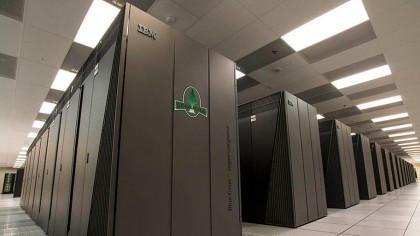10 supercomputers that are saving the world in super-fast time
How the world's most powerful computers are helping humanity
6. Stampede
USA
The Texas Advanced Computing Center (TACC) in Austin provides high performance computing to thousands of scientists and engineers every year. The 500,000-pound Stampede supercomputer has been used to improve brain tumor imaging, to predict Californian earthquakes, to analyze language and music for patterns and to better understand the flow of ice from Antarctica.
7. JUQUEEN
Germany
IBM makes yet another appearance in the top ten with JUQUEEN, which is installed at the Forschungszentrum Jülich research institute in Germany. It has been designed to handle compute-intensive tasks for scientific areas including neuroscience, computational biology, climate research and quantum physics. One of its users, the Human Brain Project, hopes to simulate the entire human brain.
8. Vulcan
USA
It's another mention for IBM: its Vulcan supercomputer, which is installed at the Lawrence Livermore National Laboratory in California. Vulcan is operated on behalf of the US National Nuclear Security Administration. Since 2013 it has also been available to scientists, engineers and academics in a wide range of sectors including energy, bioscience, atmospheric science and high performance computing technology.
9. Sequoia
USA
Are you a pro? Subscribe to our newsletter
Sign up to the TechRadar Pro newsletter to get all the top news, opinion, features and guidance your business needs to succeed!

IBM Sequoia became the world's fastest supercomputer in 2012, although it has since been pipped to the post - but it's still astonishingly powerful. While Sequoia has been used for scientific applications including astronomy, climate modeling and studying the human genome its main purpose is military: it was designed primarily for nuclear weapons simulation.
10. SuperMUC
Germany
SuperMUC may not be the fastest supercomputer in the world but at launch it was the fastest Intel-compatible system in the world. It's also one of the more energy efficient supercomputers: its unusual, IBM-developed "warm water cooling" reduces the number of cooling components necessary to stop it from getting hotter than the sun, saving millions of Euros in cooling costs.
SuperMUC is based in Garching, near Munich (MUC is Munich's airport code) and it's available "to all European researchers to expand the frontiers of science and engineering." So far it has been used for applications including computational fluid dynamics, genome analysis, earthquake simulation, computational chemistry and life sciences.
Writer, broadcaster, musician and kitchen gadget obsessive Carrie Marshall has been writing about tech since 1998, contributing sage advice and odd opinions to all kinds of magazines and websites as well as writing more than a dozen books. Her memoir, Carrie Kills A Man, is on sale now and her next book, about pop music, is out in 2025. She is the singer in Glaswegian rock band Unquiet Mind.
